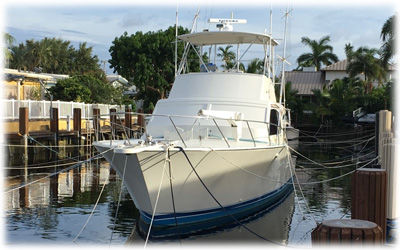![]()
Harvey and Irma and Maria..... Oh My!
The 2017 Hurricane season came to a close on November 30 and not a moment too soon. Just as Harvey finished pummeling Texas, Irma moved onshore to decimate many Caribbean islands and much of Florida. But wait, the islands in the Caribbean Sea received a one two punch as Maria, another major storm wreaked havoc on that part of the world for the second time in as many weeks.
What gives?
There are as many experts as there are opinions in the long-term hurricane forecasting game. Some talk about a reliable 10-year cycle, others feel global warming could change historical patterns substantially. Unfortunately, many agree that it is likely that the future will deliver longer lasting hurricanes packing heavier rains and higher wind intensity. What does this mean to the boater who is intent on keeping his/her pride and joy out of harm’s way? Although volumes could be written on the “what”, “when”, and “how” of hurricane preparedness for boats of all shapes and sizes, the old adage “An Ounce of Prevention is worth a Pound of Cure” couldn’t be more appropriate.
Preparation Highlights:
- Be sure that your hull insurance policy is up to date and that you have coverage during a named storm and that you are within your stated cruising area.
- If your boat is small enough to be placed on a trailer and secured in a warehouse or tied down outdoors, get it out of the water and move it to a secure inland location.
- If your boat is larger and you can get a boatyard to haul and block it as a storm approaches, this is a very good option. History has proven that boats survive hurricanes on the hard better than they do in the water. Many boatyards will sell you a guaranteed spot in their boatyard during a named storm. Shop early if this interests you, these spots fill up very quickly!
- If you must leave your boat in the water, get it as far inland as possible and choose a location that offers good protection from the prevailing winds that are forecasted as the storm passes.
- Run! If you have the time, the means and can do so safely, fire up the main engines and move your boat out of the path of the storm.
- If you are leaving your boat in the water to ride out the storm, too much might not be enough!
- Double up all of your dock lines and add chafe protection to your lines at both the dock and the boat ends. Be sure the lines are long enough to allow for potential storm surge. Use Nylon line, it stretches and acts as a shock absorber. Did you know that 3 strand nylon line will stretch up to 25% of its length before breaking?
- Deploy anchors and be sure they are set – an anchor or two, strategically placed may be what saves your boat from destruction after dock lines fail
- Move your boat as far as possible from structures like docks and seawalls.
- Remove canvas, Bimini tops, sails and other loose items from the boat and secure them indoors. Tape down hatches and doors so the wind can’t break them loose and flood your boat. Be sure scupper drains are free from debris so that decks drain overboard instead of into your bilge.
These are just a few important tips toward ensuring the safety of your boat as a storm approaches. Take time during the winter months to review your hurricane preparedness plans and to be sure you have the equipment that you will need. Need more tips or have specific questions? Call Barney Hauf, one of the captains at TowBoatU.S. Fort Lauderdale. He can be reached at 954-783-7821... Advice is always free!











